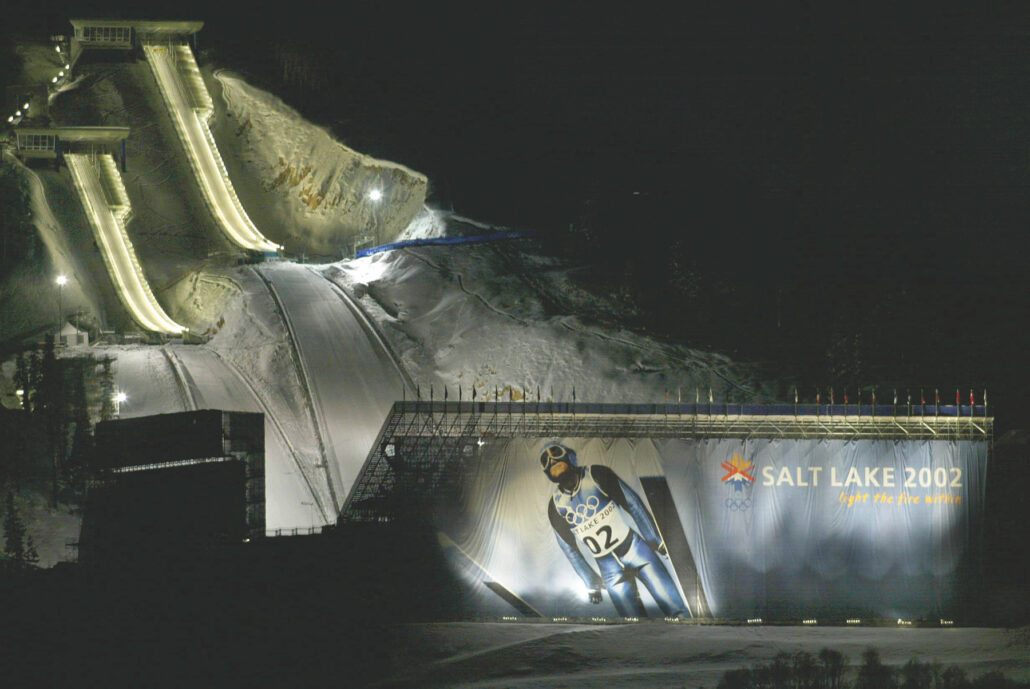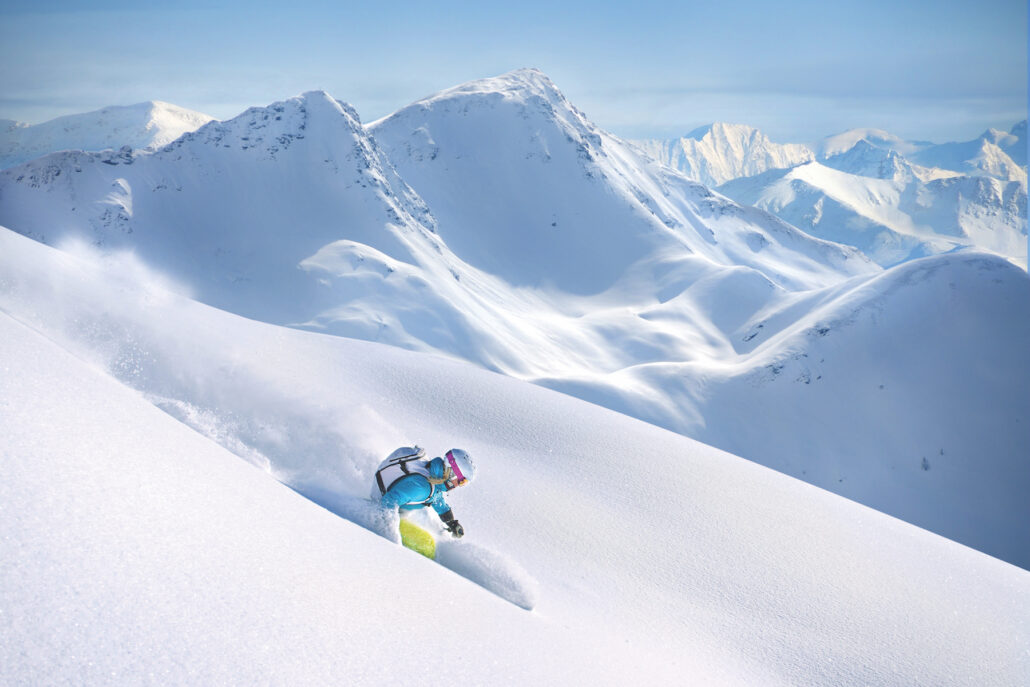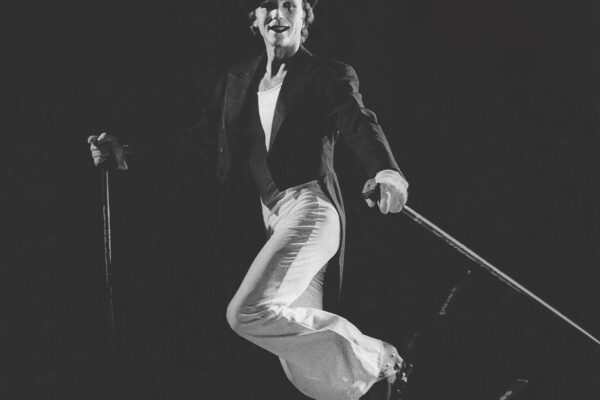
An artist on skis: Alan Schoenberger’s work combines dance, acrobatics and skiing
From hot dog skiing to theatrical performances on skis, his career has been one of a kind
Winter/Spring 22-23
Written By: Brooke Constance White | Images: Julie Shipman and Audrey Jones
Alan Schoenberger has pretty much done it all. In his 75 years of life, he’s been a ski racer, a stage performer, a dancer, an inventor, a ski coach, and a world ballet skiing champion, among other things.
A man of eclectic talents and interests, Alan got his love of dance and skiing from his parents. Before his career in snowsports and theater, he taught swimming and diving on the East Coast and was involved in the New York City dance scene. He moved to Utah in 1969 to teach skiing at Beaver Mountain and attend Utah State University.
It was during that time that a film about freestyle skiers piqued his interest in the intersection of dance, acrobatics, and skiing — so, he decided to try it out on the slopes.
“I built a big jump and was teaching myself to do back somersaults on skis. On the groomers, I was crossing my legs and spinning around,” Alan laughs. “At little Beaver Mountain — the owner definitely thought they had a serious nut case.”
It was around this time that a friend of Alan’s asked if he knew about hot dog skiing, the earliest iteration of freestyle skiing.
“This conversation was the beginning of an amazing journey for me. I began putting a piece together that was as much theatrics as it was skiing and dance. I painted my face white and created this marionette character on skis,” he says, adding that his first performance was at an intermountain ski instructor clinic at Alta. “Here I am trying to come across as this great skier and I’m doing spins and tricks. But it must have worked because Alf Engen was there, and he drew me to the Alta ski school where my freestyle career really started.”
From there, Alan began competing in (and winning) freestyle skiing competitions. He was eventually picked up by national ski shows as a performer and Ski Utah hired him to travel with Stein Eriksen and perform his ski dances.
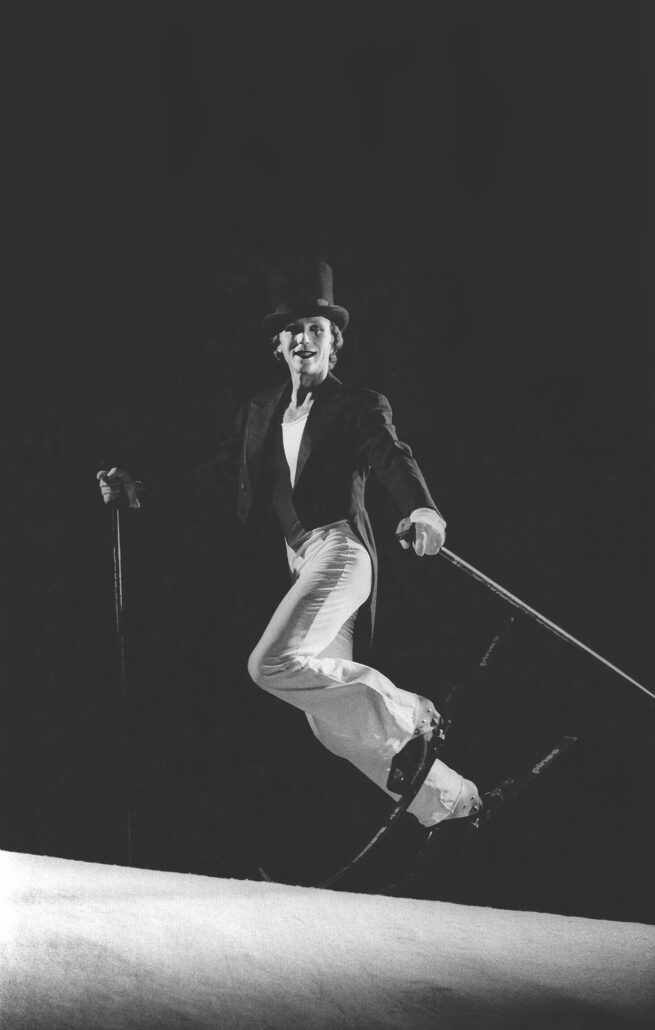
“I was skiing at all these ski shows and getting more press and my life was really good, but at the same time, I really wanted to produce theater and wanted to produce it on skis,” he says.
So together with his dad, an engineer, Alan built his first ski simulator, the SkiBed, to use in his ski performances.
“No theater got it, I mean I was like ‘Honest, trust me, I won the world trophy in ski ballet,’” he laughs. “Finally the Rochester Philharmonic Orchestra asked if I would perform on skis with the orchestra and that was my big break in performance. It got written about in Variety magazine and all those theaters who’d said no to me changed their mind.”
This led to an eight-year residency at a school in Stowe, Vermont. Alan performed his show three nights a week and coached student skiers on his ski simulator. He also performed for a sold-out audience at Bardavon 1869 Opera House in Poughkeepsie, New York.
“I can’t tell you the emotions I felt at the end of every performance; to be able to merge theater and dance and skiing and draw an audience was incredible. I would weep at the end of every show,” Alan says. “Broadway producers were coming out to look at the show, but I felt like I just wasn’t ready for that.”
Instead, Alan wanted to do longer production runs at theaters to build an audience over time and lessen the pressures of touring. He also began using his performances to fundraise for youth ski teams and ability programs and spent the final years of his touring career showcasing his talents in that capacity through his nonprofit Turning Point Ski Foundation.
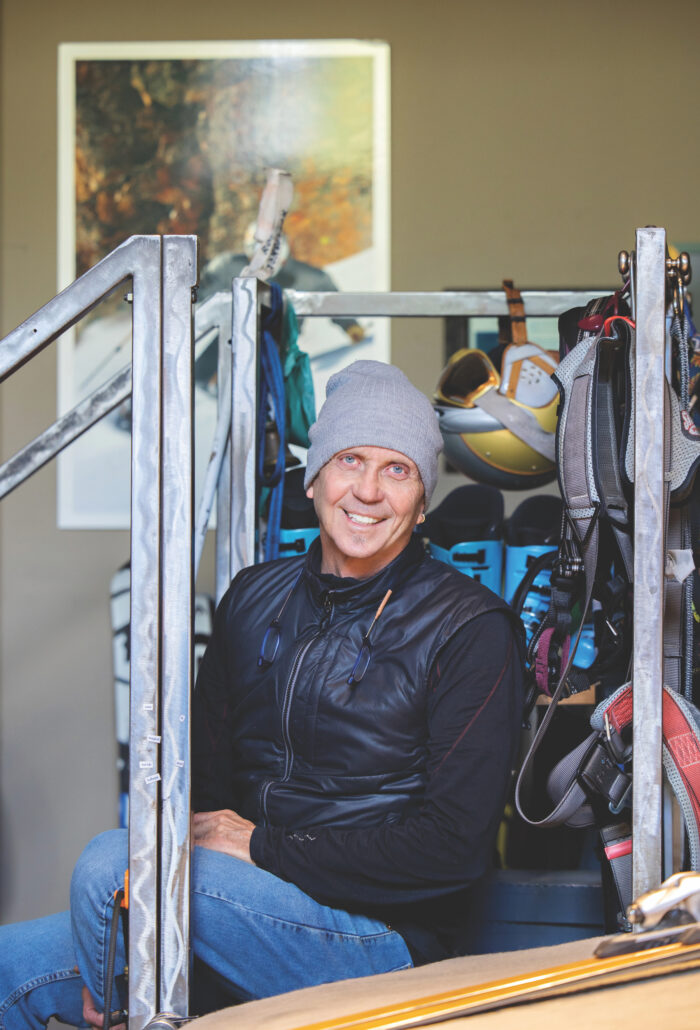
During the 2002 Winter Olympics, the Egyptian Theatre invited Alan to perform nightly, and in 2003, he opened SkiStudioParkCity to train aspiring skiers using his SkiBed ski-simulator.
Over the years, Alan has worked with some of the fastest ski racers in the nation and hundreds of his students have been on the podium. His many contributions to the sport, which also include seven alpine theatrical touring productions with 1,250 performances, will be acknowledged this spring when Alan is inducted into the U.S. Ski & Snowboard Hall of Fame.
“Being able to express my love for skiing and theater and dance, that’s what keeps me going to this day,” he says, adding that he’s writing a new show he hopes to perform in the future. “My goal is to write and perform alpine theater that moves my audience deeper — beyond the paint on the canvas.”
